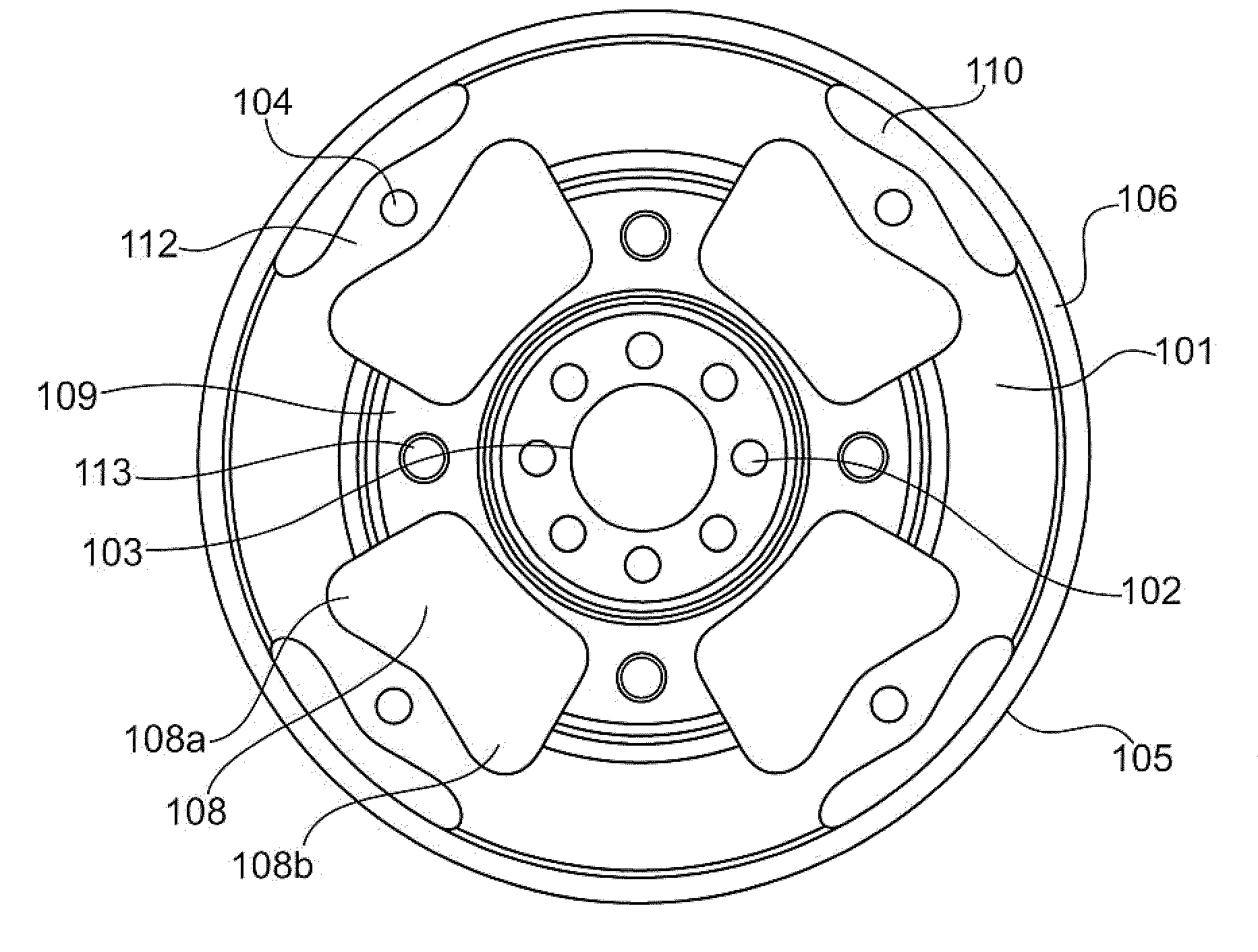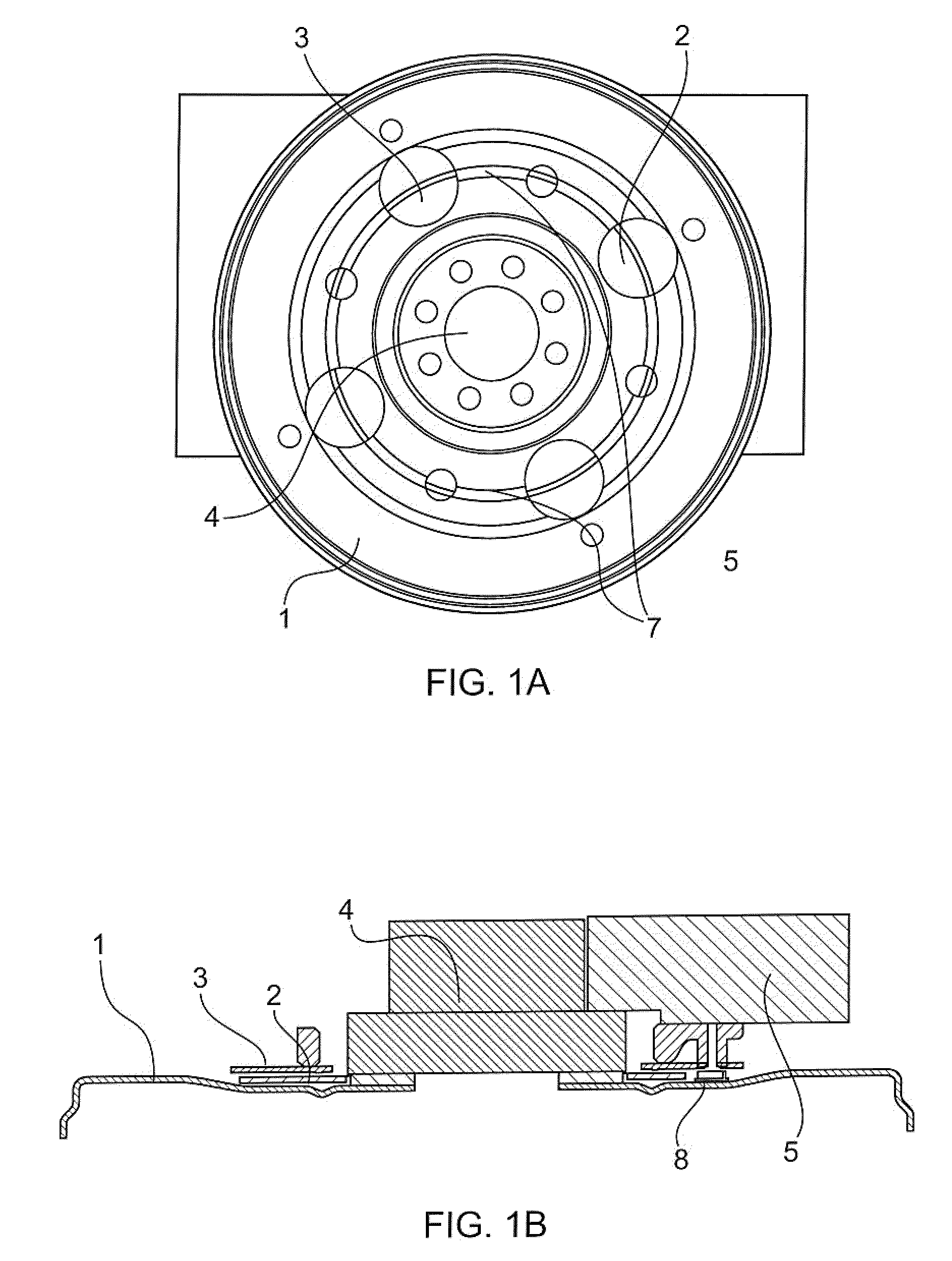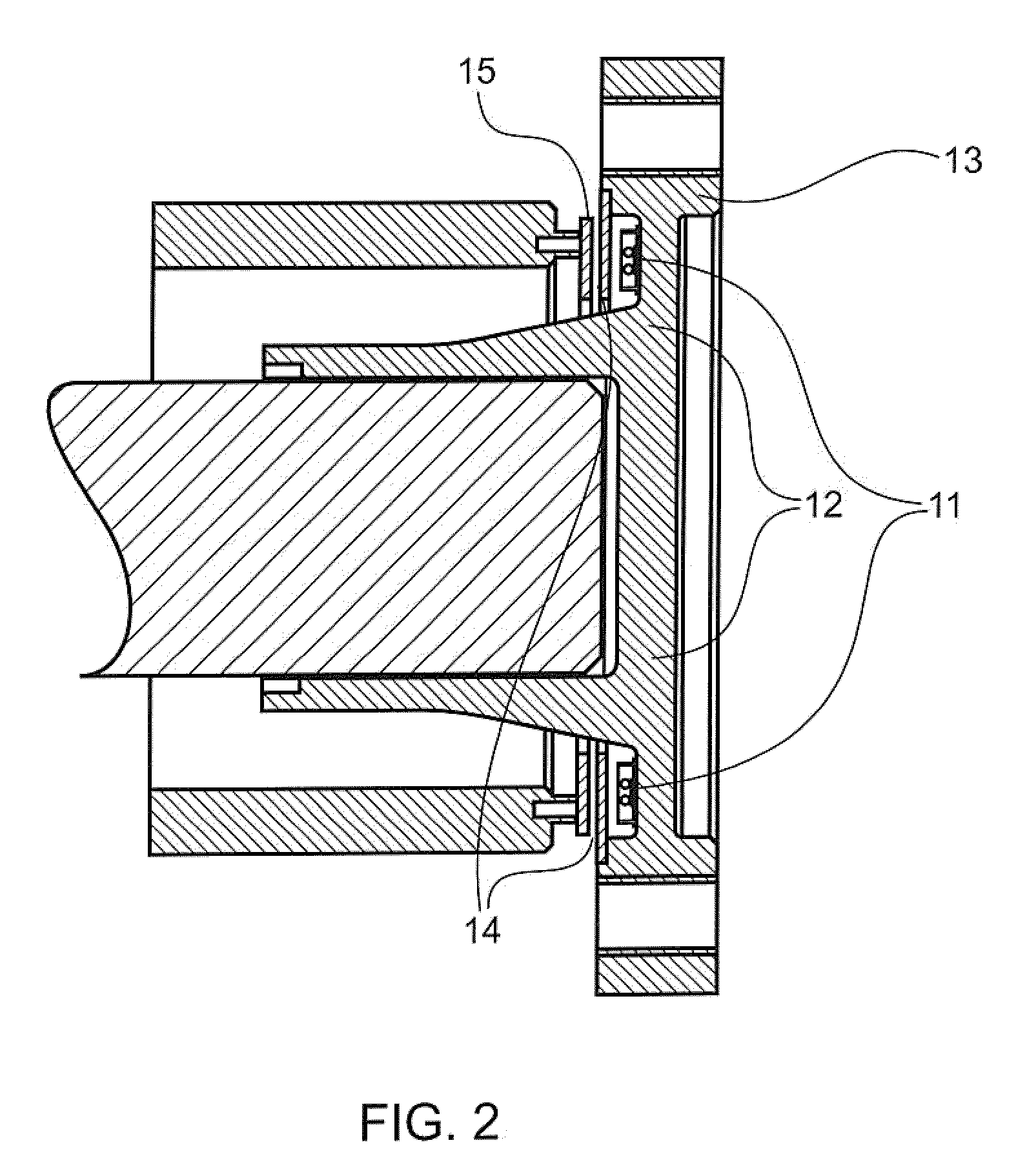Torque measurement within a powertrain
a technology of torque measurement and powertrain, which is applied in the direction of work measurement, measurement devices, instruments, etc., can solve the problems of limiting direct measurement of torque in a powertrain, unable to account for the variance in performance of volume produced engines, and unable to yield instantaneous torque output of the engine at the crankshaft, so as to minimize the angular variation of the resonant frequency (or differential phase delay), minimize the angular variation of the output coupler im
- Summary
- Abstract
- Description
- Claims
- Application Information
AI Technical Summary
Benefits of technology
Problems solved by technology
Method used
Image
Examples
Embodiment Construction
[0072]Referring to FIG. 1a, there is shown a flexplate 1, essentially a diaphragm which connects the crankshaft and the torque converter in a typical powertrain with automatic transmission, which is mounted on a crankshaft 4 which extends through an engine block 5. The flexplate is configured with cutouts to provide the required flexibility, forming spokes 7 therebetween, and, as shown in FIG. 1b, in the illustrated example a SAW sensor 8 is fastened to the engine block side of one of the spokes 7 for measuring the local strain field on the surface of the spoke, which is in turn proportional to the torque within the crank shaft 4. Also attached on the engine side of the flexplate 1 is a rotating coupler 2 which rotates with the flexplate and communicates with a stationary coupler 3 fastened to the engine block 5 for wireless transmission of signals from the SAW sensor. The stationary coupler, in the illustrated embodiment, is fastened to the block so as to maintain a small but consi...
PUM
| Property | Measurement | Unit |
|---|---|---|
| temperature | aaaaa | aaaaa |
| temperature | aaaaa | aaaaa |
| temperature | aaaaa | aaaaa |
Abstract
Description
Claims
Application Information
 Login to View More
Login to View More - R&D
- Intellectual Property
- Life Sciences
- Materials
- Tech Scout
- Unparalleled Data Quality
- Higher Quality Content
- 60% Fewer Hallucinations
Browse by: Latest US Patents, China's latest patents, Technical Efficacy Thesaurus, Application Domain, Technology Topic, Popular Technical Reports.
© 2025 PatSnap. All rights reserved.Legal|Privacy policy|Modern Slavery Act Transparency Statement|Sitemap|About US| Contact US: help@patsnap.com



